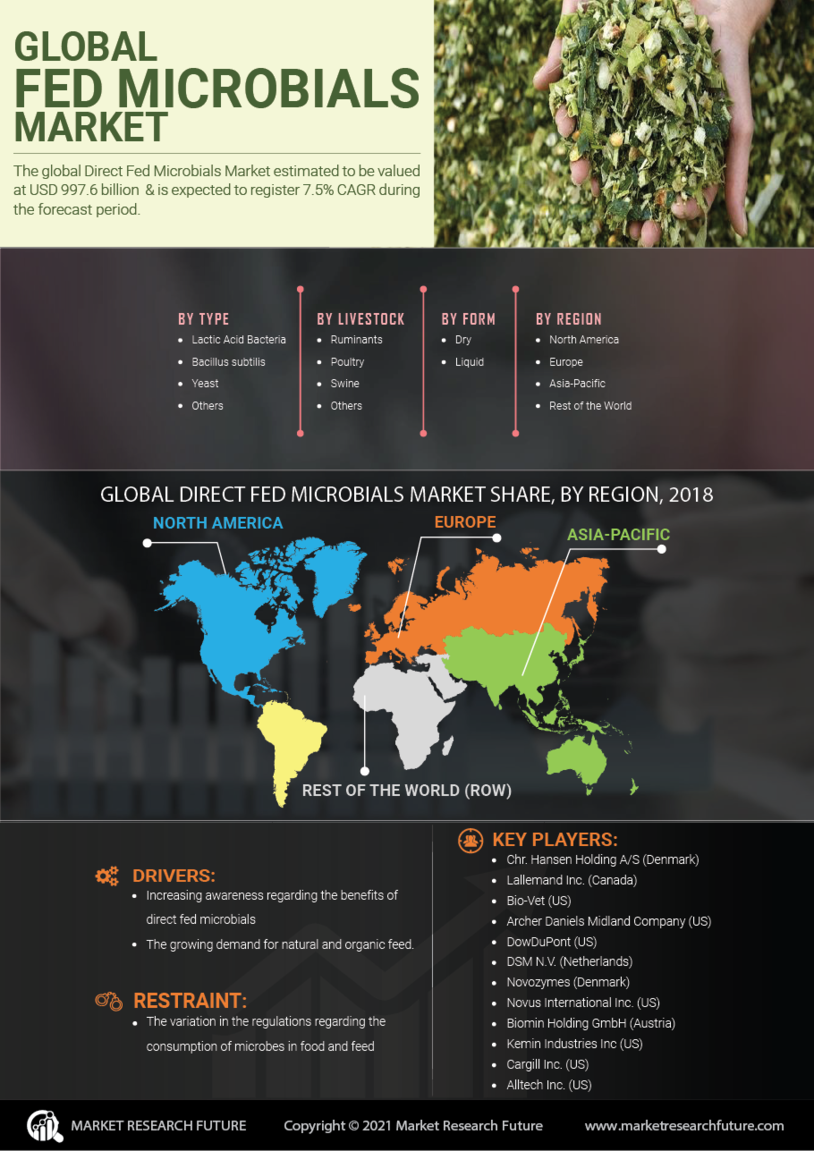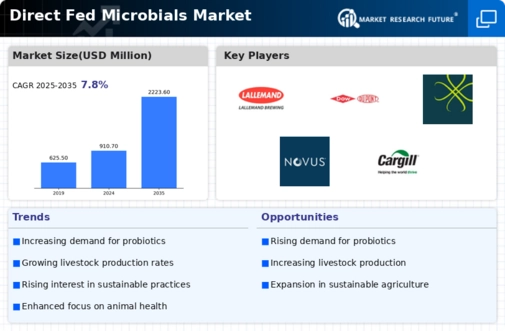Market Growth Projections
Rising Demand for Animal Protein
The increasing global population and the corresponding rise in demand for animal protein are pivotal drivers of the Global Direct Fed Microbials Market Industry. As consumers seek higher-quality meat and dairy products, livestock producers are turning to direct fed microbials to enhance animal health and productivity. This trend is evidenced by the projected market value of 910.7 USD Million in 2024, reflecting a growing recognition of the benefits of microbial additives in feed. Furthermore, the shift towards sustainable farming practices is likely to bolster this demand, as producers aim to improve feed efficiency and reduce antibiotic usage.
Regulatory Support for Natural Feed Additives
Regulatory frameworks across various regions are increasingly favoring the use of natural feed additives, including direct fed microbials. This regulatory support is crucial for the Global Direct Fed Microbials Market Industry, as it encourages livestock producers to adopt these products over synthetic alternatives. For instance, the European Union has implemented policies that promote the use of probiotics in animal feed, which could lead to a significant increase in market penetration. As regulations evolve, the market is expected to expand, with projections indicating a market size of 2223.6 USD Million by 2035, driven by a shift towards more natural and sustainable feeding practices.
Growing Awareness of Animal Health and Welfare
There is a notable increase in awareness regarding animal health and welfare among consumers and producers alike, which is driving the Global Direct Fed Microbials Market Industry. Livestock producers are increasingly adopting direct fed microbials as a means to enhance animal well-being and productivity. This trend is supported by consumer preferences for ethically produced animal products, which often emphasize health and welfare standards. As a result, the market is likely to see sustained growth, with the demand for microbial feed additives becoming a key component of modern livestock management practices.
Technological Advancements in Microbial Products
Technological innovations in the formulation and delivery of direct fed microbials are enhancing their efficacy and application in animal nutrition. The Global Direct Fed Microbials Market Industry benefits from advancements such as encapsulation techniques and targeted delivery systems, which improve the survival rates of beneficial microbes in the gastrointestinal tract of animals. These innovations not only increase the effectiveness of microbial products but also expand their usage across various livestock sectors. As a result, the market is poised for growth, with a projected compound annual growth rate of 8.45% from 2025 to 2035, indicating a robust future for these technologies.
Expansion of Livestock Production in Developing Regions
The expansion of livestock production in developing regions is a significant driver of the Global Direct Fed Microbials Market Industry. As economies in these areas grow, there is a corresponding increase in meat and dairy consumption, necessitating improved livestock management practices. Direct fed microbials are being recognized for their role in enhancing feed efficiency and animal health, making them attractive to producers in these markets. This trend is expected to contribute to the overall market growth, as producers seek solutions to meet the rising demand for animal protein while ensuring sustainable practices.






